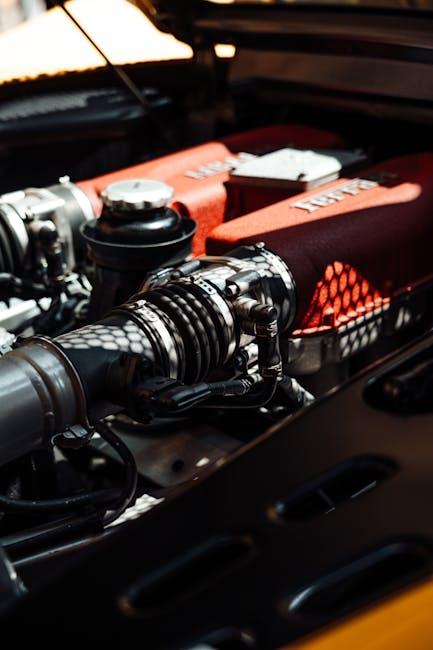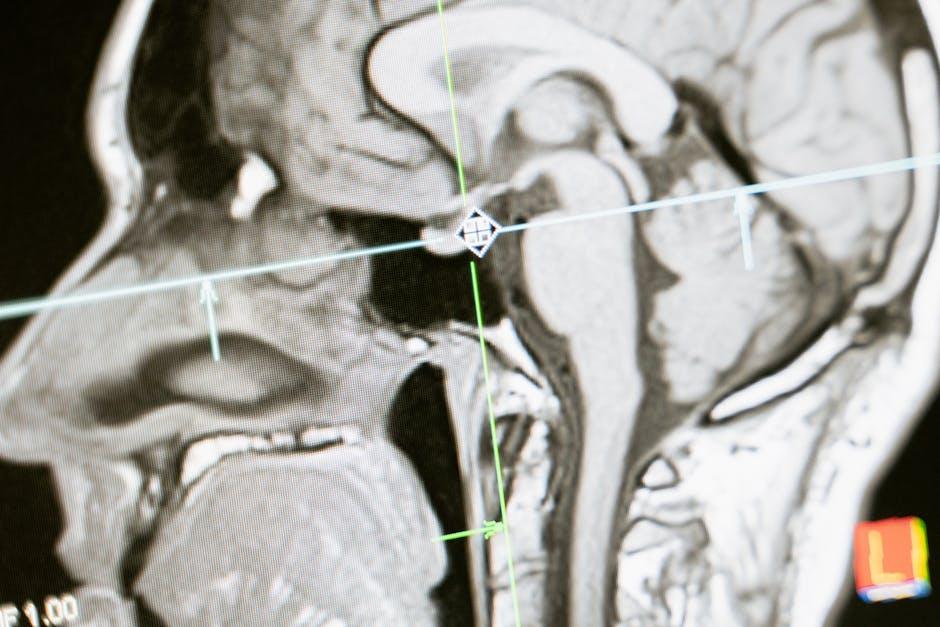Beneath the intricate machinery of any engine lies a crucial seal known as the head gasket—a small yet mighty component that holds the engine’s inner workings together. When this vital part fails, the consequences can ripple through your vehicle’s performance, often catching drivers off guard. Understanding the symptoms of a blown head gasket is not just a matter of mechanical know-how; it’s a key to early detection and timely repair. In this article, we unravel the telltale signs that signal when your head gasket might be in trouble, helping you navigate a potentially costly problem before it spirals out of control.
Table of Contents
- Common Signs That Point to a Failed Head Gasket
- Understanding the Impact on Engine Performance
- Coolant Leaks and Overheating Warnings to Watch For
- Decoding White Smoke and Exhaust Changes
- How to Perform a Preliminary Head Gasket Check at Home
- When to Seek Professional Diagnosis and Repair Advice
- Q&A
- Wrapping Up

Common Signs That Point to a Failed Head Gasket
When a head gasket begins to fail, your vehicle often exhibits a set of unmistakable symptoms. One of the most common indicators is white smoke billowing from the exhaust — a sign that coolant is leaking into the combustion chamber. Alongside this, you might notice engine overheating, caused by the loss of proper sealing and coolant circulation. Another red flag is a sudden drop in engine performance, with rough idling or misfires signaling potential internal leaks beside the head gasket.
Pay close attention to the coolant and oil condition as well. A milky, frothy substance in the oil, also known as “oil sludge,” is evidence that coolant has mixed with engine oil, severely compromising lubrication. You may also experience unexpected coolant loss without visible leaks, suggesting it’s escaping internally rather than dripping onto the ground. Below is a quick reference table highlighting some typical symptoms:
| Symptom | Possible Cause | Effect on Vehicle |
|---|---|---|
| White exhaust smoke | Coolant entering combustion chamber | Emission issues, potential engine damage |
| Engine overheating | Loss of coolant sealing | Warped cylinder head or engine failure |
| Milky oil appearance | Coolant mixing with oil | Reduced lubrication and corrosion |
| Coolant loss without leaks | Internal coolant leak | Overheating and engine damage |

Understanding the Impact on Engine Performance
When a head gasket fails, it disrupts the vital seal between the engine block and cylinder head, causing a cascade of issues that directly degrade engine efficiency. One of the most immediate consequences is a loss of compression within the cylinders, which leads to a noticeable drop in power output. This compression loss means your engine struggles to produce the force needed for optimal performance, resulting in sluggish acceleration and reduced overall responsiveness. Additionally, the mix of coolant and engine oil that often accompanies a blown gasket can cause lubrication failures, increasing friction and wear on critical engine components.
The performance setbacks extend beyond power loss, as overheating often follows, driven by coolant leaks and improper heat dissipation. This can cause the engine to operate at higher-than-normal temperatures, straining the cooling system and risking severe damage. Below are some key effects on engine performance you might observe:
- Reduced fuel efficiency: Engine struggles to burn fuel effectively due to compromised cylinder sealing.
- Irregular idling: Fluctuating engine RPMs indicating possible misfires or combustion issues.
- White smoke from exhaust: Steam resulting from coolant entering combustion chambers.
- Engine overheating: Inability to maintain proper temperature balance under load.
| Engine Aspect | Effect of a Blown Head Gasket |
|---|---|
| Compression | Loss leading to decreased horsepower |
| Cooling System | Overheating and coolant loss |
| Lubrication | Oil contamination causing increased wear |
| Exhaust Emissions | White smoke indicative of coolant burn |

Coolant Leaks and Overheating Warnings to Watch For
One of the earliest indicators of internal engine trouble is the appearance of coolant leaks, often visible as bright green, orange, or pink puddles beneath your vehicle. These leaks can originate from compromised gaskets or cracked engine blocks caused by a blown head gasket. Alongside visible leaks, a sudden drop in coolant levels without any apparent external spill can clue you in on a slow internal leak, where coolant escapes into the combustion chamber or oil system, leading to serious contamination and engine wear.
Overheating warnings are critical signals that your engine is struggling to maintain optimal temperature. If your temperature gauge consistently reads higher than normal or the warning light blares, it signals that the cooling system’s integrity has been compromised. Watch closely for symptoms such as:
- Rapid temperature spikes during normal driving conditions
- Steam or a sweet smell emanating from the hood
- Erratic fan operation or fans running continuously
| Symptom | Effect |
|---|---|
| Coolant Leak | Loss of cooling efficiency |
| Overheating | Engine damage risk |
| Warning Lights | Immediate attention needed |

Decoding White Smoke and Exhaust Changes
When your vehicle starts billowing thick white smoke from the exhaust, it’s often a clear distress signal. This phenomenon typically happens because coolant or water is leaking into the combustion chamber due to a compromised head gasket. Unlike normal exhaust vapor, which is thin and dissipates quickly, this white smoke is dense and persistent, often accompanied by a sweet smell caused by burning antifreeze. Additionally, you might notice fluctuations in exhaust color and texture, suggesting that combustion gases and coolant are mixing — a culinary recipe for mechanical misery.
Changes in the exhaust emission can be subtle or drastic, but several tell-tale signs can help you pinpoint the issue:
- Persistent white smoke even when the engine is warm
- Exhaust steam with a sweet, syrupy odor
- Fouled spark plugs stained with coolant residue
- Sudden loss of power and rough idling
| Symptom | What It Indicates |
|---|---|
| Thick white smoke | Coolant entering combustion chamber |
| Sweet-smelling exhaust | Burning antifreeze leaking past gasket |
| Engine overheating | Loss of coolant & poor sealing |
| Oil contamination | Coolant mixing with engine oil |

How to Perform a Preliminary Head Gasket Check at Home
Begin by visually inspecting your engine bay once it has completely cooled down. Look for signs of coolant leakage around the head gasket area, such as a milky-white residue mixing with engine oil or visible coolant stains. Also, check the oil dipstick and oil cap for a creamy, coffee-colored substance, which often indicates coolant has seeped into the oil passages. Don’t forget to peer into the radiator and coolant overflow reservoir for any bubbles or frothy liquid, a sign of combustion gases entering the cooling system due to a compromised gasket.
Next, you can perform a simple but effective test to catch early symptoms. Use a clean white rag or paper towel to wipe the radiator or coolant reservoir cap’s underside after the engine has been running and cooled again. If you notice oil or sludge buildup here, it might suggest head gasket distress. Keep in mind, the following signs are worth monitoring:
- Persistent overheating despite coolant levels being normal
- Unexplained loss of coolant with no visible leaks on the ground
- White smoke coming from the exhaust
- Bubbles in radiator during engine running
| Check Area | What to Look For |
|---|---|
| Engine Oil | Milky discoloration or sludge |
| Coolant | Bubbles or oily film |
| Radiator Cap | Residue or mixed fluids |
| Exhaust | White smoke or sweet smell |

When to Seek Professional Diagnosis and Repair Advice
Understanding when your vehicle’s symptoms cross the threshold from minor glitches to serious warnings is crucial for preventing severe engine damage. If you notice persistent overheating, milky oil residue, or continuous white smoke from the exhaust, these are clear signals that a professional opinion is urgently needed. Delaying diagnosis increases the risk of more costly repairs and can lead to complete engine failure.
Key signs that warrant expert intervention include:
- Sudden or recurring loss of engine power
- Unexplained coolant loss without visible leaks
- Decreased engine compression causing misfires or rough idling
- Visible bubbles in the radiator or coolant reservoir during engine operation
| Symptom | Urgency Level | Recommended Action |
|---|---|---|
| Engine Overheating | High | Seek immediate diagnostics |
| White Smoke from Exhaust | High | Schedule professional inspection |
| Coolant Mixed with Oil | Critical | Do not drive, contact mechanic |
| Rough Engine Idle | Medium | Monitor and consult technician if persistent |
Q&A
Q&A: Symptoms of a Blown Head Gasket
Q: What exactly is a blown head gasket?
A: Imagine the head gasket as the airtight seal that sits between your engine block and cylinder head. When it “blows,” it means this seal is broken, allowing fluids and gases to mix that shouldn’t, which disrupts the engine’s smooth operation.
Q: How can I tell if my head gasket is blown?
A: There are several telltale signs. The most common include white smoke billowing from the exhaust, especially after startup, indicating coolant leaking into the combustion chamber. You might also notice your engine overheating frequently or an unexplained drop in coolant levels without visible leaks.
Q: Are there any unusual noises or smells linked to a blown head gasket?
A: Yes. A sweet, syrup-like smell from the exhaust or near the radiator often hints that coolant is burning inside the engine. Additionally, you might hear a rough idle or sputtering as the engine struggles to maintain combustion.
Q: What about the engine oil—does it give away any clues?
A: Absolutely. If you notice your oil has turned a milky tan color, like a chocolate milkshake, it’s a strong indicator that coolant has mixed with the oil, a classic symptom of a compromised head gasket.
Q: Can a blown head gasket affect car performance?
A: Definitely. You might experience a loss of power, rough running, or difficulty accelerating since combustion efficiency drops when the gasket seal breaks.
Q: Is it possible for a blown head gasket to cause overheating?
A: Yes. When the head gasket is damaged, coolant can leak into the cylinders or outside the engine, reducing the coolant level and causing the engine temperature to rise rapidly.
Q: If I notice these symptoms, should I drive my car immediately to a mechanic?
A: It’s best to limit driving if you suspect a blown head gasket. Continued use can worsen the damage and lead to costly repairs. Arrange for a professional diagnosis and repair as soon as possible.
Q: Can a blown head gasket repair be avoided with regular maintenance?
A: While regular maintenance helps overall engine health, head gasket failures can sometimes be sudden due to overheating or manufacturing defects. Keeping your cooling system in good shape and monitoring engine temperature can reduce risks.
Q: How urgent is repairing a blown head gasket?
A: Very urgent. Ignoring it can lead to severe engine damage, including warped heads or cracked engine blocks, which are far more expensive to fix than the gasket itself.
Q: What’s next after identifying these symptoms?
A: Consult your trusted mechanic for a thorough engine inspection. Early detection and repair of a blown head gasket can save you from costly repairs and get you back on the road safely.
Wrapping Up
Understanding the symptoms of a blown head gasket is crucial for every vehicle owner. While the signs can sometimes be subtle, recognizing them early can save you from costly repairs and prolonged downtime. Whether it’s unusual smoke, overheating, or unexpected leaks, paying close attention to your car’s behavior is the first step toward timely intervention. Remember, your engine’s health relies on these small signals—listen carefully, and you’ll keep your vehicle running smoothly for miles to come.

